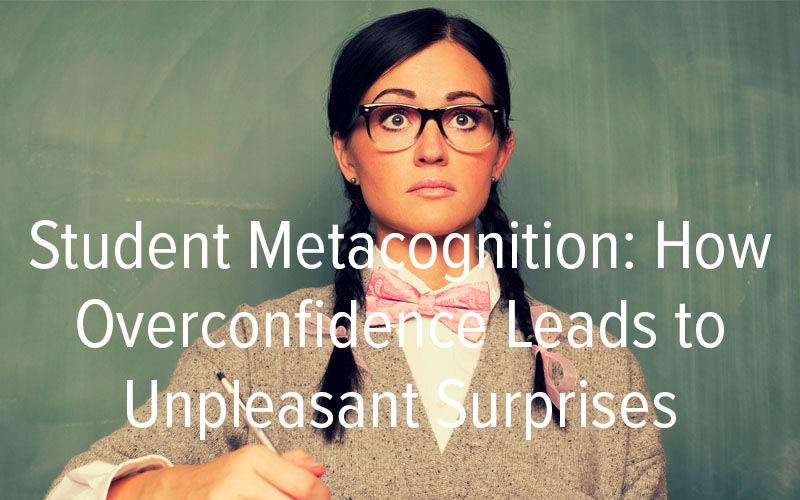
If you drive a car, chances are you’ve been a victim (or instigator) of at least one fender-bender. Whether the careless driver was you or the other person, there is one likely factor: the instigator was overconfident in his or her driving abilities.
Overconfidence is such a common phenomenon it’s no surprise that it would affect every area of our lives—even those areas where caution is essential.
Is the world of higher education immune? Sadly, no. An intriguing essay from Aeon Magazine cited a variety of studies that reveal an epidemic of overconfidence among college students.
Most notably, David Dunning and Justin Kruger’s semester-long study of college students in 1999 revealed that poor performers who were given feedback about their past test scores still could not accurately predict their future performance. They predicted they would do well, but time and time again, they did not.
Dunning and Kruger concluded that D and F students have a higher propensity to overestimate their abilities than A students, who actually have a tendency to underestimate their abilities. A students also were better able to reevaluate their competence when presented with evidence contrary to their self-assessments.
What Does This Mean for Higher Education?
Well, first it means students need to learn to accurately evaluate their competence. More importantly, it means universities need to give students the tools to accurately evaluate their competence—before exam time.
Often, students feel confident in their knowledge after reading the material several times, completing homework assignments, and taking online quizzes. Unfortunately, according to learner data from Amplifire, students who confidently rely on these study methods alone are overconfident in their knowledge.
The problem is, traditional studying doesn’t make information stick. The basic principles of neuroscience tell us that the human brain was built to learn and retain information in very specific ways.
Students don’t know this. Most professors don’t know this. If you want to help your students succeed, teach them that caution is essential – not just when driving a car, but when studying for a test. Overconfidence leads to unpleasant surprises like car crashes and F’s on exams.
So what does cautious learning look like? It looks like universities reevaluating course design in light of cognitive science. It looks like students adopting new learning tools, feeling confidently prepared for exams—and being right about their level of preparedness.
Case in Point: Amplifire helped 40,000 students in North Carolina improve their metacognition—and their exam scores.







